My daughter just moved on to two digit addition with regrouping (that’s “carrying” for us old folks). Since a dime conveniently equals 10 pennies, I thought we could use coins to make the concept more concrete.
We start with the basic concept that each penny is one cent and that each dime is ten cents so one dime is equivalent to ten pennies.
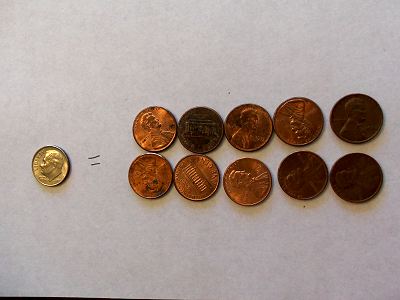
Next, I write out a two-digit addition problem that will require regrouping (the ones column adds up to ten or more). My daughter places pennies in the ones column and dimes in the tens column next to each of the numbers.
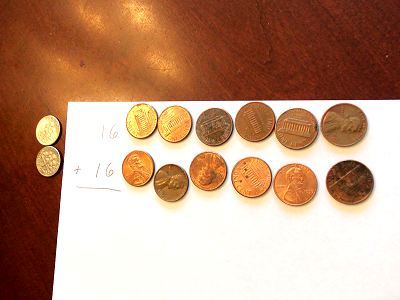
My daughter likes to shake the paper a little to “smush” the coins together. This is not necessary but it sure is fun!
The next step is to “regroup” the pennies from both numbers into a group of ten and then the remaining pennies. Exchange the group of ten pennies for a dime.
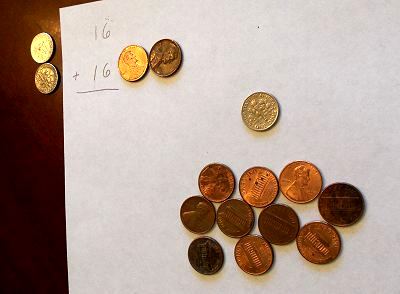
The dime, of course, wants to go join its other dime friends over in the tens column.
Count up the number of pennies and that will be your “ones”. Count up the number of dimes and that will be your “tens”.
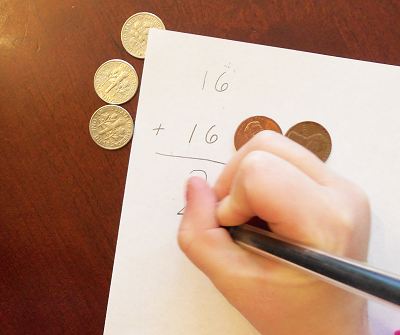
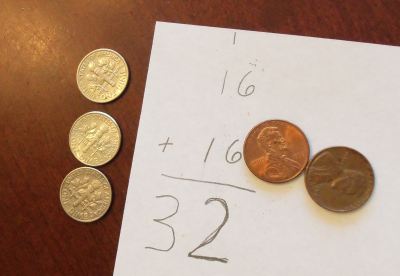
That’s it!
Math manipulatives help kids gain a deeper understanding of key mathematical concepts. Learning this way helps children understand why…beyond just the what. Physically manipulating objects also helps new skills “stick” to a base of experience. Studies have shown that physical activities linked to learning promotes deeper understanding and better recall even in adults.
What tips and tricks do you have for teaching elementary mathematics?

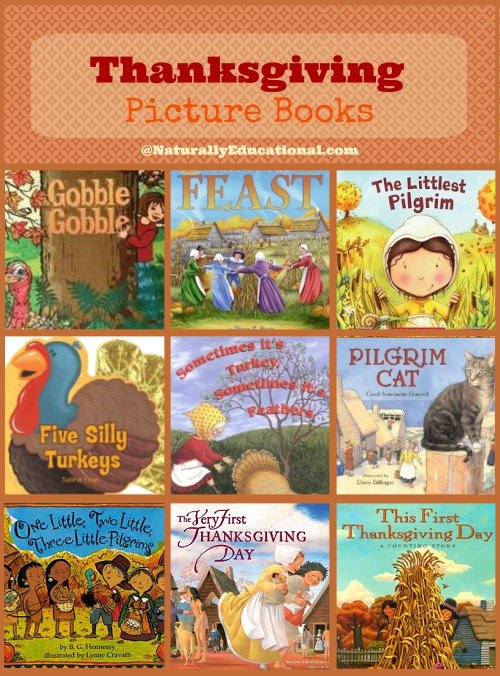
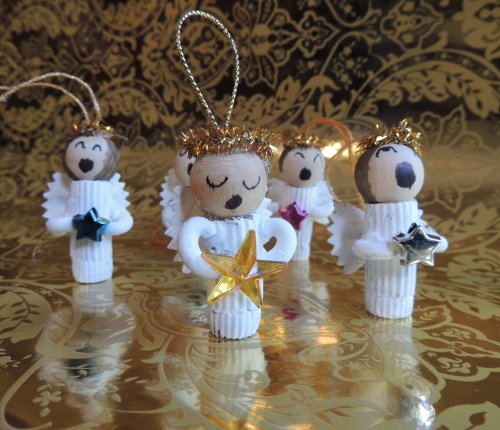
2 thoughts on “Teaching Two-Digit Addition with Regrouping”
Comments are closed.